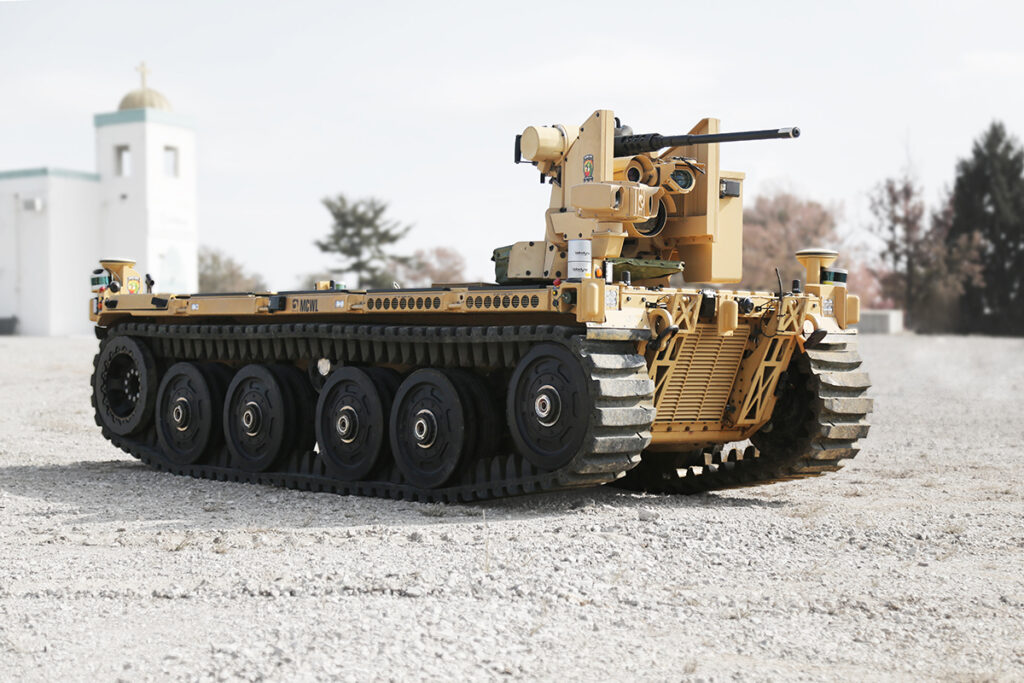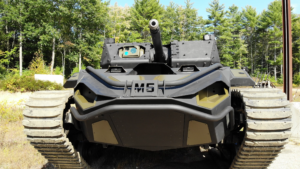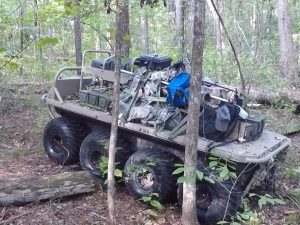
The Qinetiq/Pratt & Miller Expeditionary Modular Autonomous Vehicle (EMAV)
WASHINGTON: The Army’s march into a robotic future had a success and a stumble this week — and that stumble is a big one.
The success: This morning, the service announced contracts to buy eight experimental Robotic Combat Vehicles to use in wargames next year to try out new technologies and tactics:
- QinetiQ North America and partner Pratt & Miller will provide four of their seven-ton EMAV robots (Expeditionary Modular Autonomous Vehicles) to serve as the RCV-Light.
- Textron will provide four of its 10-plus-ton Ripsaw mini-tanks to serve as the RCV-Medium. (Textron also offered a stripped-down Ripsaw variant for RCV-Light).
The Army is also looking for an RCV-Heavy in the 20-plus-ton range, but it expects industry to take longer to develop that class and doesn’t plan to field-test them until 2023.

Textron Ripsaw M5
But even as RCV moves forward, another, larger robotic program had to hit the reset button. In October, the Army awarded the long-awaited Small Multi-Purpose Equipment Transport (S-MET) contract to General Dynamics, which had offered their MUTT robot. Losing bidder Textron then filed a protest with the Government Accountability Office; that’s a pretty routine step on a major contract, but what’s not routine is that GAO seems to have been inclined to agree that the award was flawed. Yesterday, National Defense broke the news that the Army quietly canceled General Dynamics’ contract in December and plans to issue a new Request For Proposals this month, with a new (and hopefully lasting) award to come by the end of April.
Technologically, S-MET is much less ambitious than the Robotic Combat Vehicles, because it’s unarmed. Essentially, S-MET is a golf-cart-sized all-terrain vehicle that trundles along after foot troops, carrying supplies and spare gear. Financially, however, General Dynamics’s $162 million award to build 624 S-METs is a much bigger deal than the contracts to build a grand total of eight RCVs.

The General Dynamics MUTT, contender for the Army’s new robotic mule, the SMET (Small Multipurpose Equipment Transport)
Yes, Textron and QinetiQ certainly hope those eight vehicles are the first of hundreds to come. Getting the awards to build these experimental proto-prototypes does give them an edge when it comes time to mass-produce the final RCV designs. But they’re hardly guaranteed a win on that future contract, if it ever comes. It’s entirely possible that budget cuts and bureaucratic mismanagement will cause RCV to join the gigantic scrap heap of canceled Army programs.
The Army has vowed to fix its chronic acquisition problems, which from 1995 to 2010 poured $32 billion into 22 major programs, none of which ever made it into the field. That fix takes the form of the year-old Army Futures Command, which brings together onto one team the futurists, tacticians, technologists, program managers, and others previously scattered across the bureaucracy. But with Army modernization so long delayed by decades of cancelled programs, and with the threat of Russia and China rising, Army acquisition is also under pressure to move fast – which brings risks of its own.
Connecticut lawmakers to grill Army, Lockheed about job cuts at Sikorsky helicopter unit
“The Connecticut delegation has questions about why, with that [FY24] appropriation in hand, this happened,” said Rep. Joe Courtney, D-Conn.


























